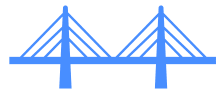As we navigate the evolving landscape of global creativity, remote design jobs have emerged as a pivotal element in today’s workforce. The remote design job market is stabilizing in 2025, with a notable 13% increase in job openings from last year’s low. This growth signifies a rebound from the previous downturn, reflecting the market’s resilience and adaptability. Currently, remote work availability has settled at a sustainable baseline of 21% for design roles, indicating a new normal for the industry.
The journey to stabilization
The initial surge in remote work opportunities post-pandemic led to a dramatic shift in how design professionals approached their careers. As companies scrambled to adapt to new working conditions, remote design roles became a necessity rather than a luxury. However, as the dust settled, the market began to stabilize, finding a balance between remote and in-office work that aligns with both employer needs and employee preferences. This stabilization is influenced by several key factors, including globalization, technological advancements, and evolving work preferences.
Understanding the changing dynamics
Globalization has played a significant role in expanding the reach of remote design jobs. As companies seek to tap into diverse talent pools, the demand for remote design professionals has grown. Technological advancements have further enabled this shift, providing the tools necessary for seamless collaboration across borders. Additionally, the changing preferences of the workforce, with a growing emphasis on flexibility and work-life balance, have cemented remote work as a viable and attractive option for many design professionals.
The purpose of this blog
This blog aims to provide a comprehensive overview of the current landscape of remote design jobs, offering insights into the trends and strategies that can help both job seekers and employers navigate this evolving market. Understanding these dynamics is crucial for harnessing the full potential of remote design work, ensuring that both companies and professionals can thrive in a globalized, digital-first environment.
Current market landscape: a closer look
The remote design job market has reached a phase of stabilization, characterized by a cautious optimism as we progress through 2025. With active design job openings currently at 4,909, this marks a 13% increase from last year’s low of 4,344 positions. Despite this growth, the numbers remain lower than the 2022 peak experienced during the post-pandemic hiring boom. This shift indicates a recalibration in the market, where the initial frenzy has given way to a more sustainable pace.
Remote work availability has also settled into a new normal, with only 21% of design job postings now offering remote options. This is a noticeable decline from nearly 30% at the end of 2022, suggesting that while remote work remains a significant component of the design industry, it is not as universally adopted as it was in the immediate aftermath of the pandemic. For job seekers, this means a more competitive landscape where remote opportunities are coveted, while employers must strategically balance in-office and remote roles to attract top talent.
Top-ranking content strategies and angles
Job aggregation and listing approach
Indeed.com continues to dominate the job listing space, offering a wealth of opportunities with a strong emphasis on flexible, work-from-home positions. Their approach is practical and transaction-focused, providing direct job listings and facilitating salary searches. This strategy effectively addresses the immediate needs of job seekers looking for remote design roles, ensuring they have access to a wide range of options.
Industry analysis and trend forecasting
Splashtop’s strategic content positions them as thought leaders in remote work trends. By analyzing global remote work adoption and predicting the rise of hybrid work models, they provide valuable insights for business decision-makers. Their focus on cybersecurity and AI integration highlights the evolving challenges and opportunities within remote work environments, making their content particularly relevant for companies navigating these changes.
Market intelligence and data-driven insights
The AI First Designer publication offers a deep dive into market analysis for design professionals. Leveraging partnerships for comprehensive job market data, they provide detailed insights into hiring trends, geographic distribution, and the impact of AI on design roles. This specialized resource is invaluable for design professionals seeking data-driven perspectives that go beyond general job boards.
Career development and educational focus
UX-Woman’s educational approach targets entry-level professionals and career changers, offering actionable career guidance and benefits-focused job recommendations. Their focus on UX design, UX research, and product design pathways provides practical advice for those entering the field, positioning them as mentors for the next generation of design professionals.
Geographic and sector insights
Remote design job availability varies significantly by region, with the United States leading with 419 remote-friendly positions. Other active markets include Canada, Israel, the United Kingdom, India, and Poland. This geographic distribution suggests that while remote work has expanded globally, certain regions remain more vibrant in offering opportunities.
Industry-specific trends reveal that remote opportunities are more prevalent in consumer apps, FinTech, and AI tooling sectors. Conversely, sectors like hardware and deeply collaborative product development areas see fewer remote roles, indicating that the nature of the work significantly influences the viability of remote arrangements.
Competitive content positioning for BridgeWay
As the remote design job market continues to stabilize, BridgeWay Solution Ltd. has a unique opportunity to fill critical content gaps and position itself as an industry leader. By addressing the complexities of international compliance and the nuances of hiring remote design talent across borders, BridgeWay can provide invaluable insights to businesses navigating this landscape.
Scale-up companies, in particular, are underserved by current content offerings. These businesses need strategic guidance on building remote design teams while managing compliance and payroll complexities. By focusing on this audience, BridgeWay can offer tailored solutions that address their specific challenges.
Additionally, there is a noticeable lack of content analyzing global talent cost savings. BridgeWay can leverage its expertise to provide detailed insights into the financial advantages of hiring remote design talent internationally, potentially saving companies up to 80% on hiring costs. This analysis will not only attract companies looking to optimize their budgets but also position BridgeWay as a thought leader in cost-effective global team building.
Conclusion: Navigating the remote design landscape
In conclusion, the remote design job market presents both challenges and opportunities for job seekers and employers alike. With the market stabilizing at a sustainable baseline, understanding the dynamics of international hiring, compliance, and cost savings is crucial for success. By leveraging specialized expertise and data-driven insights, companies can navigate this evolving landscape and harness the full potential of remote design work.
BridgeWay Solution Ltd. is poised to fill critical gaps in the market by providing comprehensive solutions for international compliance, strategic team building for scale-up companies, and detailed global talent cost analysis. By addressing these needs, BridgeWay can help businesses thrive in a globalized, digital-first environment.
Frequently Asked Questions
What are the current trends in remote design jobs?
The remote design job market has stabilized, with 21% of job postings offering remote options. Sectors such as consumer apps, FinTech, and AI tooling have higher remote work prevalence, while hardware and collaborative product development sectors see fewer remote roles.
How can companies manage international compliance when hiring remote design talent?
Companies can navigate international hiring complexities by partnering with an Employer of Record (EOR). An EOR handles legal and financial compliance, payroll, and taxes, allowing companies to focus on their core operations without establishing a legal entity in each country.
What are the benefits of hiring remote design talent from a cost perspective?
Hiring remote design talent internationally can lead to significant cost savings, potentially up to 80%. Companies can access a global talent pool, reduce overhead costs, and optimize their budgets by leveraging remote work arrangements.
How is AI impacting remote design roles?
AI is increasingly integrated into design processes, enhancing efficiency and innovation. It automates routine tasks, allowing designers to focus on creative work. This integration is reshaping remote design roles, making them more dynamic and technologically advanced.
What resources are available for entry-level professionals seeking remote design jobs?
Entry-level professionals can benefit from educational and career development resources like UX-Woman, which offers actionable career guidance, benefits-focused job recommendations, and insights into UX design, UX research, and product design pathways.




